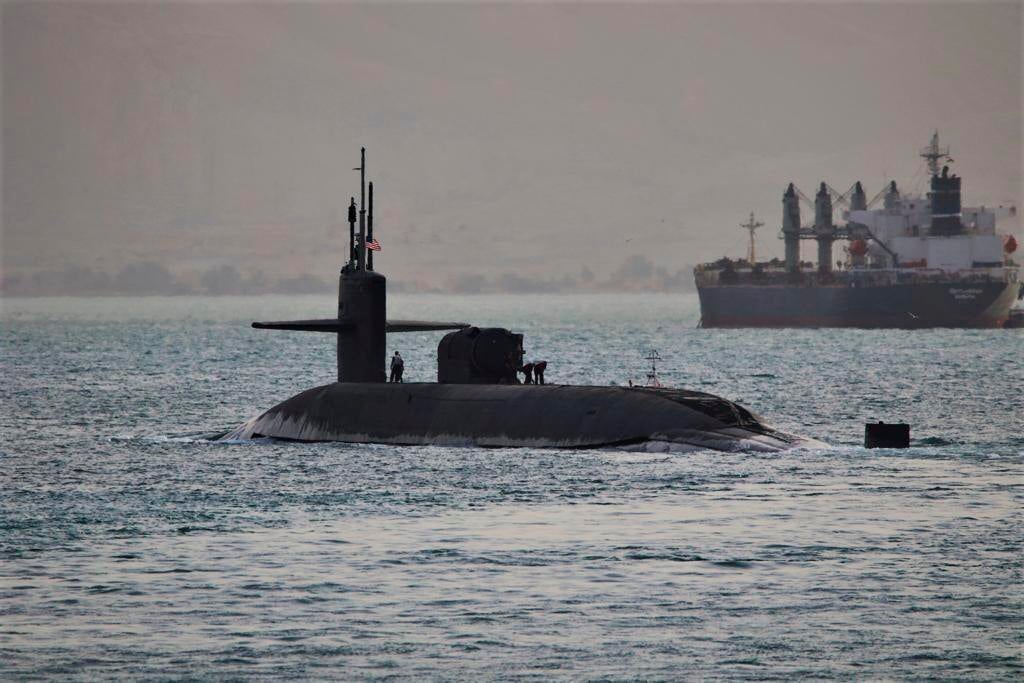US deploys guided-missile submarine amid tensions with Iran
The U.S. Navy has dispatched a guided-missile submarine capable of carrying up to 154 Tomahawk missiles to the Middle East

Your support helps us to tell the story
From reproductive rights to climate change to Big Tech, The Independent is on the ground when the story is developing. Whether it's investigating the financials of Elon Musk's pro-Trump PAC or producing our latest documentary, 'The A Word', which shines a light on the American women fighting for reproductive rights, we know how important it is to parse out the facts from the messaging.
At such a critical moment in US history, we need reporters on the ground. Your donation allows us to keep sending journalists to speak to both sides of the story.
The Independent is trusted by Americans across the entire political spectrum. And unlike many other quality news outlets, we choose not to lock Americans out of our reporting and analysis with paywalls. We believe quality journalism should be available to everyone, paid for by those who can afford it.
Your support makes all the difference.The U.S. Navy has deployed a guided-missile submarine capable of carrying up to 154 Tomahawk missiles to the Middle East, a spokesman said Saturday, in what appeared to be a show of force toward Iran following recent tensions.
The Navy rarely acknowledges the location or deployment of submarines. Cmdr. Timothy Hawkins, a spokesman for the 5th Fleet based in the Gulf nation of Bahrain, declined to comment on the submarine's mission or what had prompted the deployment.
He said the nuclear-powered submarine, based out of Kings Bay, Georgia, passed through the Suez Canal on Friday. “It is capable of carrying up to 154 Tomahawk land-attack cruise missiles and is deployed to U.S. 5th Fleet to help ensure regional maritime security and stability,” Hawkins said.
The 5th Fleet patrols the crucial Strait of Hormuz, the narrow mouth of the Persian Gulf through which 20% of all oil transits. Its region includes the Bab el-Mandeb Strait off Yemen and the Red Sea stretching up to the Suez Canal, the Egyptian waterway linking the Mideast to the Mediterranean Sea.
The U.S., the U.K. and Israel have accused Iran of targeting oil tankers and commercial ships in recent years, allegations denied by Tehran. The U.S. Navy has also reported a series of tense encounters at sea with Iranian forces that it said were being recklessly aggressive.
Last month, the U.S. launched airstrikes against Iran-backed forces in Syria after a rocket attack killed a U.S. contractor and wounded seven other Americans in that country's northeast.
Tomahawk cruise missiles launched from ships or submarines can hit targets up to 2,500 kilometers (1,500 miles away). They were famously employed during the opening hours of the 2003 U.S.-led invasion of Iraq and in response to a Syrian chemical weapons attack in 2018.
U.S.-Iranian tensions have soared since then-President Donald Trump withdrew from a 2015 agreement with world powers that provided sanctions relief in return for Iran curbing its nuclear activities and placing them under enhanced surveillance.
The Biden administration's efforts to restore the agreement hit a wall last year. The tensions have worsened as Iran has supplied attack drones to Russian forces in Ukraine and as Israel and Iran have escalated their yearslong shadow war in the Middle East.
In addition to drawing closer to Moscow, Tehran has sought improved relations with China, which brokered an agreement last month to restore diplomatic ties between Iran and Saudi Arabia.